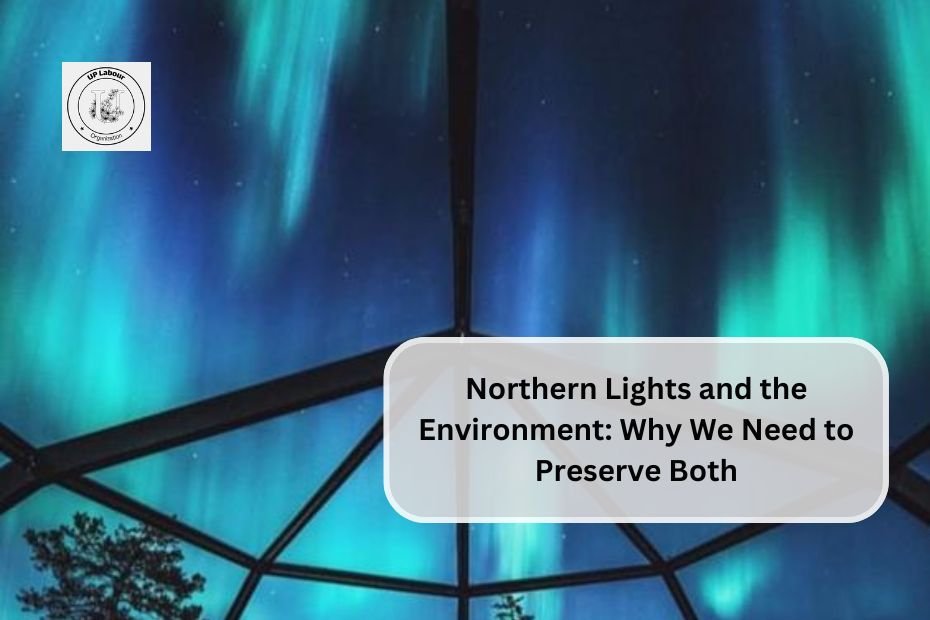The Northern Lights, or aurora borealis, are not only a stunning natural phenomenon but also a vital part of the Earth’s environmental system. As we explore the relationship between the Northern Lights and the environment, it becomes clear that preserving both is essential for maintaining ecological balance and enhancing our experience of this breathtaking spectacle. Here’s a detailed look at why we need to protect both the Northern Lights and the environments in which they are viewed.
The Importance of the Northern Lights
Cultural and Scientific Significance
The Northern Lights have captivated human imagination for centuries, featuring prominently in folklore, art, and scientific inquiry. They serve as a reminder of the intricate interplay between solar activity and Earth’s atmosphere. For many indigenous cultures in the Arctic regions, the auroras hold spiritual significance and are woven into their stories and traditions.From a scientific perspective, studying the Northern Lights provides insights into atmospheric physics, magnetosphere dynamics, and solar-terrestrial interactions. Understanding these phenomena helps scientists predict space weather events that can impact satellite operations and communications on Earth.
Ecological Impact
The Northern Lights also play a role in ecological systems. The interactions between solar particles and Earth’s atmosphere can influence weather patterns and climate conditions. These changes can affect various ecosystems, particularly in polar regions where wildlife is adapted to specific environmental cues.
The Threat of Light Pollution
Diminished Visibility
One of the most significant threats to experiencing the Northern Lights is light pollution. Urbanization has led to increased artificial lighting, which brightens the night sky and obscures celestial phenomena. As noted by experts, light pollution reduces visibility and intensity of auroras by creating a washed-out effect against a brightened sky . This diminishes not only our ability to view the Northern Lights but also our overall connection to the night sky.
Impact on Wildlife
Light pollution affects more than just human observers; it disrupts nocturnal wildlife behaviors as well. Many species rely on natural darkness for navigation, mating, and feeding. For instance, insects attracted to artificial lights become vulnerable to predators, disrupting local ecosystems . By reducing light pollution in aurora zones, we can help preserve these delicate ecological balances.
Climate Change and Its Effects
Altered Weather Patterns
While climate change does not directly affect the mechanics of how Northern Lights form, it can influence their visibility through altered weather patterns. Increased greenhouse gas emissions lead to changes in cloud formation and precipitation intensity, resulting in more frequent cloudy nights that obstruct views of auroras . As global temperatures rise, understanding these dynamics becomes crucial for both aurora enthusiasts and environmental conservationists.
Ozone Layer Considerations
The ozone layer plays a protective role in maintaining atmospheric conditions conducive to viewing the Northern Lights. It absorbs harmful UV radiation from the sun, which helps stabilize weather patterns. However, ozone depletion—often linked to human activities—can alter atmospheric dynamics that indirectly affect auroras . Protecting the ozone layer is essential for preserving our ability to enjoy these natural displays.
Strategies for Preservation
Reducing Light Pollution
To enhance our experience of the Northern Lights while preserving natural ecosystems, several strategies can be implemented:
- Promote Dark-Sky Initiatives: Encourage local governments to adopt dark-sky policies that limit unnecessary outdoor lighting.
- Use Shielded Lighting: Transitioning to shielded outdoor lighting can minimize light pollution by directing light downward rather than allowing it to scatter into the atmosphere.
- Educate Communities: Raising awareness about the effects of light pollution on both celestial phenomena and local wildlife can foster community efforts to reduce artificial lighting.
Addressing Climate Change
Combating climate change is critical for maintaining both auroral visibility and ecological balance:
- Reduce Greenhouse Gas Emissions: Supporting policies that promote renewable energy sources can help mitigate climate change impacts.
- Protect Natural Habitats: Preserving ecosystems that contribute to carbon sequestration can help combat climate change while also protecting wildlife.
Conclusion
Preserving the Northern Lights and their surrounding environments is essential not only for enhancing our experience of this breathtaking phenomenon but also for maintaining ecological balance. By addressing light pollution and combating climate change through concerted efforts at individual, community, and policy levels, we can ensure that future generations will have the opportunity to marvel at the beauty of the aurora borealis while fostering a healthier planet. The connection between human activity and environmental preservation is vital in ensuring that both nature’s wonders and our ecological systems thrive together.

